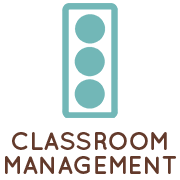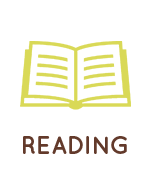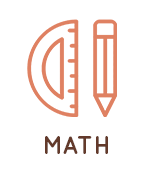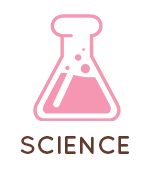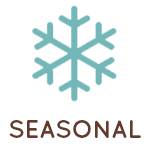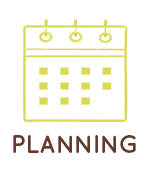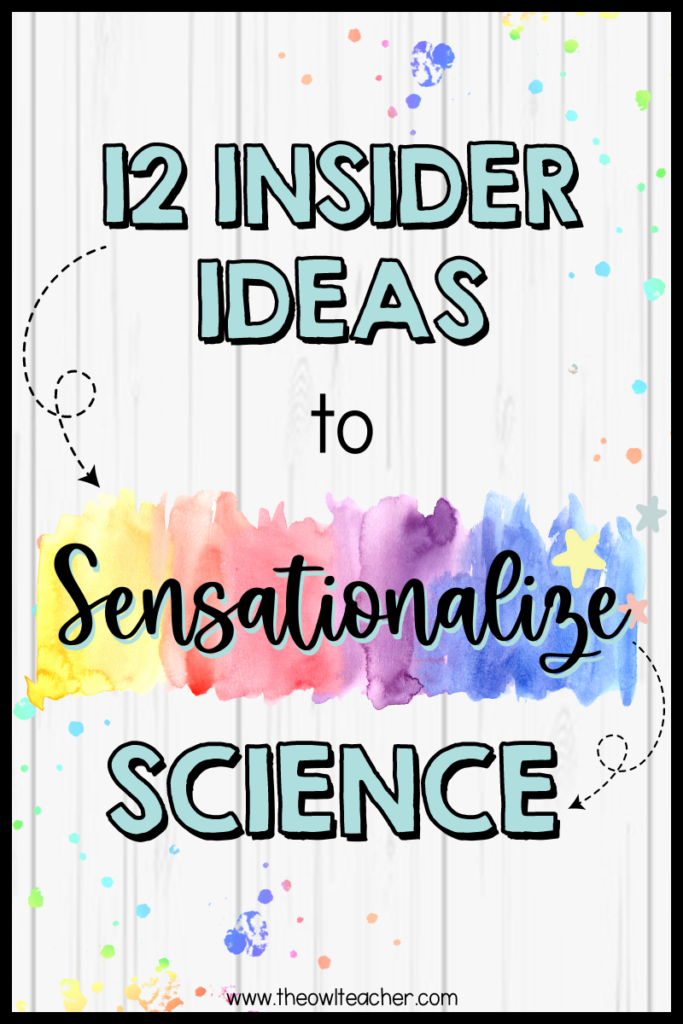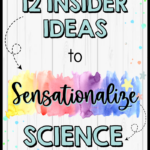
The importance of science in our elementary classrooms cannot be overstated. It’s a vastly significant area we have to teach, but often gets pushed to the back burner because of time constraints. When we do get around to fitting it in, it’s often about serious business only–no time for fun here! So how can we make sure that we are fitting in the all-important standards while still engaging our students and hooking them on the content?
Thankfully, that’s where my pals and I come to the rescue. Check out this round-up of sensational science ideas that are sure to win your students over!
Show Me the Science!
🧪 Science is one of those subjects that can get pushed to the back if you’re not remembering to do it! Leigh, from The Applicious Teacher, shares a great tip for getting your students excited about Science! Mystery Bags- Science is all about using your senses to make observations. In this simple activity, students use their sense of touch to make observations and build their inquiring skills. Click here to get more details!
🧪 As teachers we always want our learners to be actively engaged in our lessons. One way that is often overlooked to engage our learners in science is through read-alouds. Students benefit by building background knowledge, being introduced to vocabulary, and piquing their interest in the lesson that is to come! From force and motion to soil to habitat read alouds, there are so many wonderful, grade-appropriate books for science to hook and engage our learners in new topics! Read more about using read-alouds in science lessons here. Also, be sure to grab the FREE list of science read-alouds from Amanda from Mrs. Richardson’s Class.
🧪 One way to get students excited about science is having a “science lab” on Fridays that is a hands-on science experiment! You can dress up in a lab coat and goggles and create a magical science moment for your students. Michelle from Apples and ABC’s, finds lessons that are welcoming for the students to touch, explore, and try on their own. One tip she has is explaining the objective, defining vocabulary, and establishing rules for the materials; then she lets the students explore in small groups. After they have made their observations, they come back and discuss with the whole group what they found with their experiment.
🧪 Integrating science and math can be a powerful way to help students make connections between multiple subject areas. Integrating your lessons can help students develop a deeper understanding of both subjects and see the real-world applications of the concepts they learn. Marcy from Saddle Up for 2nd Grade shares that science often involves problem-solving and making predictions. Teachers can incorporate math by using read-alouds. For example, Just a Second by Steve Jenkins is sure to be a classroom hit, especially if they enjoy learning about animals. Jenkins does a great job relating animal facts to concepts of telling time. Another example would be to integrate measurement and data with a science experiment such as measuring plant growth over time or the change in temperature.
🧪 Do you want to engage both your students’ senses and scientific knowledge? One way to ensure student engagement is to incorporate hands-on activities into your lesson plans. When students can actively participate in the learning experience, it keeps them interested in the material. After all, it is hard to get bored when THEY are the ones leading the discovery! Amy Lemons suggests using experiments and demonstrations that make the learning process more interactive and memorable. For example, students experience a chemical reaction with an erupting apple, and all you need is an apple, food coloring, and baking soda! Check out a twist on this classic activity HERE!
🧪 As a teacher, I understand how difficult it can be to engage all of my students in the classroom. 3D project cubes have proven to be a great tool for engagement. 3D project cubes help bring the material to life by combining visual and physical elements with a colorful 3D cube. Ronnie from A Teacher’s Wonderland, suggests using 3D project cubes as part of a lesson or activity to help students solidify their understanding. This is great for biomes or learning about animals. Students find that it really helps them understand the concept quickly and accurately. 3D project cubes offer an engaging and fun way to get your students actively involved in their learning without compromising content quality. You can read more about it here!
🧪 Science is always the first thing to get wiped from a lesson plan…but we know it’s students’ favorite time of the day. Molly from Lucky Learning has learned that not all Science lessons need to be complicated or filled with tons of materials. A quick lesson can be as simple as learning a song about the Water Cycle or a walk around the classroom to hunt for Matter!
🧪 It is so easy to feel like there are not enough hours in the day to cover all the science units or even a single science topic when there is so much to teach. As a former second-grade teacher of 16 years, Trina Deboree, from the podcast One Tired Teacher, says that the best way to convert your classroom to a science classroom, even for just a few short minutes daily, is to focus on science concepts in your reading block. This way, teachers use intentional science content and don’t choose random informational text while teaching informational literacy instruction focusing on comprehension.
Integration makes a lot of sense and can honestly be the only way to ensure that students are exposed to science topics and science lessons. In fact, the very basics of STEM (Science, Technology, Engineering, and Math) are an integration of multiple disciplines and how they naturally interweave.
Trina goes on to share a great way to cover the content area of science at the grade level during your reading block so that you can steal back some precious minutes for hands-on inquiry-based science during your short science block. Hear more about how to successfully integrate science into the 2nd-grade classroom on episode 138 of One Tired Teacher.
🧪 Working your science standards into your literacy block is a great way to make sure your students get all of the skill exposure that they need. But, all of that nonfiction reading can get awfully dry. How can you keep your students excited about science during your literacy block? Stephanie from The Simple Classroom shares three tips for engaging students in science outside of the science block. Check out these creative writing prompts, read aloud titles, and more!
🧪 The pressure can be high with a limited time to get through your classroom material. Don’t let science become one of those subjects you need more hours in the day for – make it part of an integrated learning experience! You can incorporate science into your classroom’s already-packed schedule with ease! By connecting science with reading and writing tasks, students will benefit from increased curiosity and enthusiasm toward exploring scientific concepts. Incorporate hands-on experiments into daily activities like researching or listening exercises; you can unlock the potential of your students to learn about science without taking away too much precious lesson planning time. Angela from The Daily Alphabet believes that adding these experiences will help convince your students (and you!) that science doesn’t have to be boring but can spark interest in new ideas for further exploration.
🧪 Another simple way to keep students excited and engaged is to integrate art into your science lessons. There are many simple ways to bring art into your science lessons, from directed drawings and crayons to paper mache and watercolor creations!
Jana from We Heart Teaching shares how she used art as a culminating activity for her Parts of a Plant unit. Students were able to follow along with a directed drawing to design and paint their own flowers, including the parts they had learned about in class. They then created their own captions (hello nonfiction text features!) to describe the function of each plant part. Not only is this a fun and personalized activity for students, but it also makes a great academic bulletin board display! Read more about this activity and see the step-by-step process HERE.
🧪 I’ll throw my hat into the ring, too: try using technology in science to not only excite students–you know how much they love technology!–but also to fit in those future-era computer skills. In particular, Google Classroom is an excellent resource! From quizzes to videos to assignments, Google Classroom can do just about anything you can do in-person (except be the awesome teacher you are, of course). In addition, you can import premade science lessons and units, such as my digital Animal Adaptations activity. If you’re looking to dive into Google Classroom, check out my step-by-step blog post to get started!
If you’re short on time but need to get in those science standards, this is the place to be! We have lots of great science ideas for you–and don’t forget to check out all the hands-on ideas on this site. We covered many different science concepts and you can even integrate them into your reading and language arts block! This round-up of ideas will definitely have your students begging for more as they will be hooked on science!
As always, thanks for reading… And stay tuned for more round-ups in your future!


